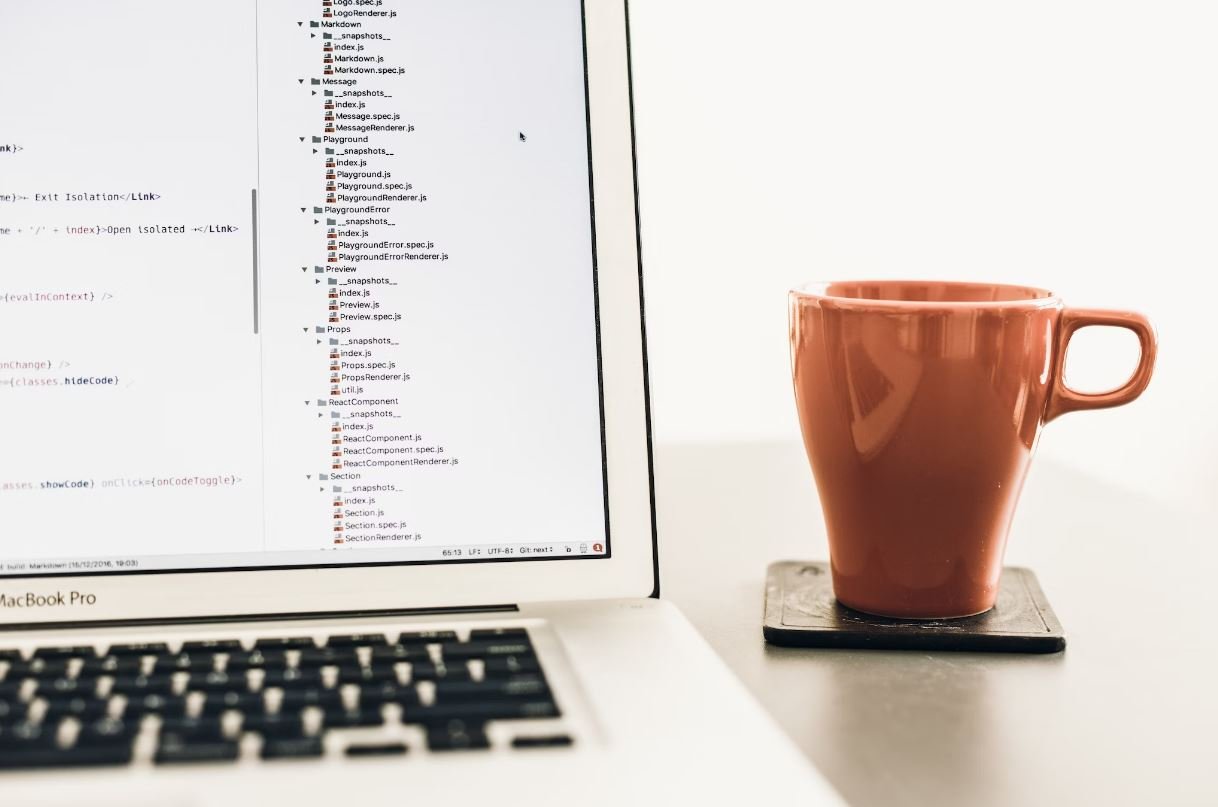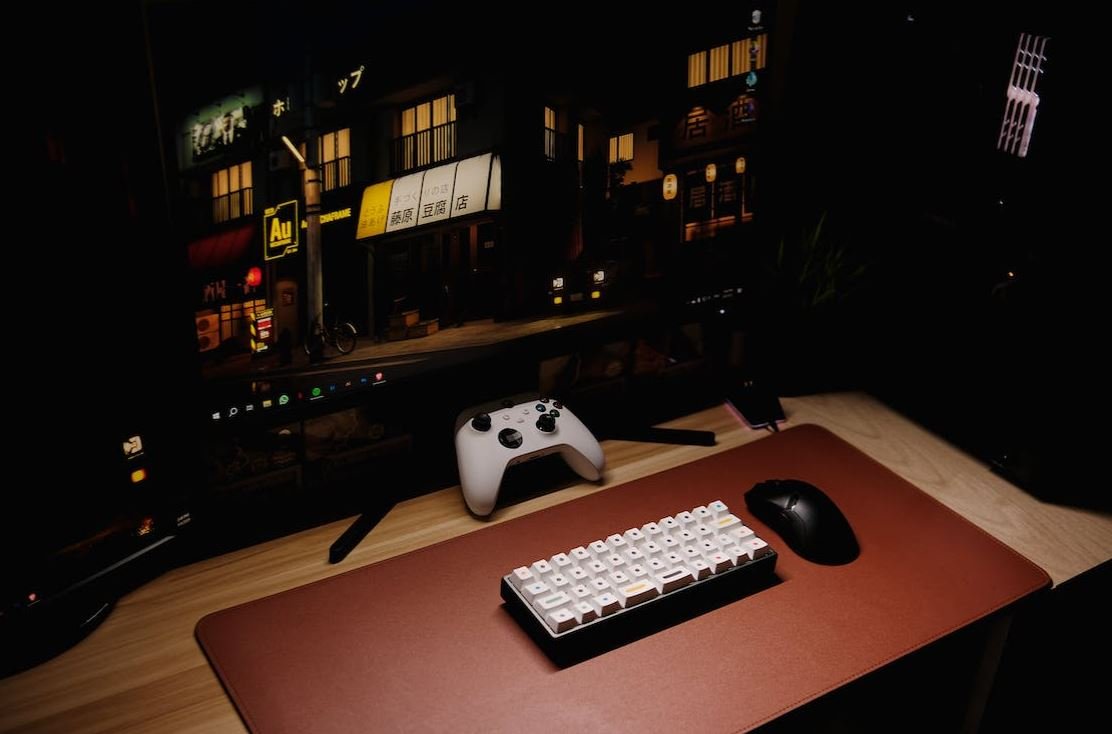App Background
With the increasing reliance on smartphones and mobile applications, it’s important to understand the background of apps and how they function. This article explores the essential aspects of app background, including key takeaways, interesting data points, and valuable information for developers and users alike.
Key Takeaways
- App background refers to the processes and activities that occur when an app is not actively in use but still running in the background.
- Proper app background management is crucial for maintaining device performance, optimizing battery life, and ensuring data privacy.
- Developers must consider background tasks, push notifications, and background refresh to enhance user experience and app functionality.
- Users should be aware of app permissions and regularly review background app activities to maintain device security and privacy.
Understanding App Background
When you close an app on your smartphone, it doesn’t necessarily mean it completely stops running. **Apps often run in the background**, performing various tasks and activities that provide essential functionalities. For example, social media apps can continue to update your feed, receive notifications, or fetch data even when they are not actively open on your device. This background behavior allows apps to deliver real-time updates and functionality, enhancing user experience and convenience.
**To better manage background activities, operating systems implement certain restrictions**. Background tasks are allocated limited resources to prevent excessive battery drain and performance degradation on the device. These restrictions vary depending on the platform, necessitating proper background management from app developers to deliver a smooth experience without compromising device performance.
Background Tasks and Push Notifications
**Background tasks** are essential for the smooth functioning of many apps. These tasks can include updating content, fetching new data, or running periodic maintenance activities. By utilizing background tasks effectively, apps can provide up-to-date information without requiring constant user interaction. However, developers must strike a balance between app functionality and resource consumption, ensuring that background tasks are optimized for performance and efficient battery usage.
**Push notifications** play a critical role in keeping users engaged and informed about app updates or relevant content. When properly implemented, push notifications deliver timely messages to users’ devices, even when the app is not in the foreground. These notifications can be personalized, helping users stay connected to their favorite apps and receive important information without actively using the app.
Background Refresh and App Permissions
**Background refresh** is a feature implemented by many apps to keep their content up to date in the background. It allows apps to fetch new data, update content, and refresh information without requiring users to manually open the app. This functionality ensures that users always have the latest information readily available, saving time and improving user experience.
**App permissions** play a crucial role in managing app background activities and data privacy. When installing or updating apps, users are prompted to grant various permissions, such as access to location, camera, microphone, or other device resources. Reviewing and managing app permissions regularly is important to maintain control over the data accessed by apps running in the background. By staying vigilant, users can protect their privacy and mitigate potential security risks.
Interesting Data Points
Here are three tables showcasing some interesting data points related to app background:
Table 1: Top App Categories Based on Background Activity (2021)
| Rank | App Category |
|---|---|
| 1 | Social Networking |
| 2 | Music |
| 3 | News |
Table 2: App Permissions Requested by Category (2021)
| App Category | Most Requested Permission |
|---|---|
| Social Networking | Access to Contacts |
| Health & Fitness | Access to Motion & Fitness Activity |
| Shopping | Access to Location |
Table 3: Average Battery Impact of Apps Running in the Background
| App Category | Average Battery Impact |
|---|---|
| Social Networking | High |
| News | Medium |
| Travel | Low |
Conclusion
Understanding and managing app background activities is crucial for both developers and users. **By optimizing background tasks, push notifications, and background refresh**, developers can deliver efficient and seamless app experiences that meet users’ expectations. On the other hand, users must actively manage app permissions and review background activities to maintain device security and privacy. A well-managed app background can enhance the overall usability and performance of mobile applications.

Common Misconceptions
App Background
- Misconception: Background apps do not consume device resources
- Misconception: Closing apps from the background improves device performance
- Misconception: Background apps don’t pose any security risks
Many people tend to misunderstand the nature of apps running in the background on their devices. These misconceptions can often lead to incorrect assumptions about device performance, resource consumption, and security risks associated with background apps.
Resource Consumption
- Misconception: Background apps do not consume device resources
- Misconception: Background apps are not resource-intensive
- Misconception: Closing background apps automatically frees up resources
One common misconception is that background apps do not consume device resources. In reality, apps running in the background can continue to use processing power, memory, and battery life. Even though they may not be visible on the screen, background apps often perform tasks such as syncing data or receiving notifications. Closing background apps does not automatically free up system resources, as the operating system manages resource allocation efficiently.
Device Performance
- Misconception: Closing apps from the background improves device performance
- Misconception: Keeping background apps active enhances multitasking
- Misconception: Background apps never affect device responsiveness
Another misconception is that closing apps from the background will significantly improve device performance. While it may help in certain cases, modern operating systems prioritize active tasks over background processes, meaning that closing background apps may have minimal impact on performance. Keeping certain background apps active can even enhance multitasking capabilities. However, poorly optimized or malfunctioning background apps can occasionally impact device responsiveness.
Security Risks
- Misconception: Background apps don’t pose any security risks
- Misconception: Background apps cannot access sensitive data
- Misconception: Force closing background apps enhances device security
Misunderstandings about security risks associated with background apps are also widespread. Background apps can potentially access sensitive data, particularly if not properly secured by the developer. Although operating systems have security measures in place to restrict access, it is important to regularly update apps to ensure any known security vulnerabilities are patched. Force closing background apps does not necessarily enhance device security; it’s more effective to use trusted apps and maintain a secure device environment.

1. Popular Smartphone Operating Systems
As of 2021, the smartphone industry is dominated by a few major operating systems. Here’s a breakdown of the market share for each:
| Operating System | Market Share (%) |
|---|---|
| Android | 72 |
| iOS | 27 |
| Others | 1 |
2. App Downloads by Country
App downloads can vary greatly among different countries. Here’s a comparison of app downloads in select countries:
| Country | App Downloads (in billions) |
|---|---|
| China | 59.9 |
| United States | 14.5 |
| India | 12.2 |
| Brazil | 6.3 |
| Japan | 4.7 |
3. Top 5 App Categories
While there are numerous app categories, certain types gain more popularity than others. Here are the top 5 app categories by number of downloads:
| Category | Downloads (in millions) |
|---|---|
| Social Media | 12,500 |
| Entertainment | 9,800 |
| Games | 8,700 |
| Productivity | 6,400 |
| Music | 5,200 |
4. Average Number of Apps per Smartphone
On average, smartphone users have a variety of apps installed on their devices. Here’s the average number of apps per smartphone (by country):
| Country | Average Number of Apps |
|---|---|
| United States | 80 |
| China | 75 |
| Japan | 64 |
| Brazil | 54 |
| India | 48 |
5. Revenue from Mobile Apps
Mobile apps contribute significantly to the economy. Here’s a breakdown of global app revenue by year:
| Year | Revenue (in billions USD) |
|---|---|
| 2019 | 461 |
| 2020 | 581 |
| 2021 | 693 |
| 2022 | 828 |
| 2023 | 986 |
6. Average App Usage Time per Day
People spend a significant amount of time using mobile apps on a daily basis. Here’s the average duration (in minutes) users spend on apps:
| Age Group | App Usage Time (minutes) |
|---|---|
| 18-24 | 180 |
| 25-34 | 163 |
| 35-44 | 137 |
| 45-54 | 120 |
| 55+ | 89 |
7. App Store Ratings (iOS)
The average user ratings play a crucial role in app store rankings. Here’s the distribution of user ratings for iOS apps:
| Rating | Percentage of Apps |
|---|---|
| 5 Stars | 61% |
| 4 Stars | 25% |
| 3 Stars | 9% |
| 2 Stars | 4% |
| 1 Star | 1% |
8. App Development Platforms
Developers have various platforms to choose from when creating mobile apps. Here’s the distribution of app development platforms:
| Platform | Percentage of Developers |
|---|---|
| Android | 47% |
| iOS | 32% |
| Hybrid | 16% |
| Windows | 4% |
| Others | 1% |
9. User Demographics
Different demographics show varying app usage patterns. Here’s the breakdown of app usage by gender:
| Gender | Percentage of App Users |
|---|---|
| Male | 52% |
| Female | 48% |
10. App Revenue Distribution
App revenue is not evenly distributed among all developers. Here’s the distribution of app revenue earned by different developers:
| Developer Type | Percentage of Revenue |
|---|---|
| Top 10% | 80% |
| Next 20% | 15% |
| Remaining 70% | 5% |
In this article, we explored various aspects of the app background. We looked at the popularity of smartphone operating systems, app downloads by country, top app categories, average number of apps per smartphone, app revenue, average app usage time, app store ratings, app development platforms, user demographics, and app revenue distribution. These tables provide a glimpse into the ever-growing app landscape, highlighting the immense impact and potential of mobile applications.
Frequently Asked Questions
Q: What is App Background?
App Background refers to the visual appearance or design elements of an application interface that are displayed behind the content or user interface elements.
Q: Why is App Background important?
App Background plays a crucial role in enhancing the overall user experience by providing visual context, reinforcing branding, and creating a pleasant and engaging atmosphere for the users.
Q: What factors should I consider when choosing the App Background?
When selecting the App Background, it is important to consider factors such as the app’s purpose, target audience, brand identity, color psychology, readability, and overall aesthetics to ensure a cohesive and visually appealing interface.
Q: How can I create an effective App Background?
To create an effective App Background, you can follow these steps:
1. Understand the app’s purpose and target audience.
2. Choose appropriate colors that reflect the app’s branding and appeal to the target audience.
3. Use visual elements that complement the app’s content and interface.
4. Ensure readability by selecting suitable fonts and contrasting colors.
5. Test the App Background on different devices and screen resolutions to ensure consistency.
Q: Can I change the App Background dynamically?
Yes, you can change the App Background dynamically based on various factors such as user preferences, time of day, location, or app theme. This can be achieved through programming and implementing dynamic backgrounds in your application.
Q: Are there any best practices for designing App Backgrounds?
Yes, some best practices for designing App Backgrounds include:
1. Using colors that evoke desired emotions and align with the app’s purpose.
2. Considering accessibility guidelines to ensure inclusivity.
3. Avoiding excessive distractions that may interfere with the app’s usability.
4. Maintaining consistency with the overall app design.
5. Conducting user testing and gathering feedback to improve the App Background.
Q: Can the App Background affect app performance?
While the App Background can have an impact on app performance, it is typically minimal. However, using high-resolution images or complex animations as the background may increase the app’s memory usage and potentially affect performance, especially on older or low-end devices.
Q: How can I optimize the performance of the App Background?
To optimize the performance of the App Background, you can:
1. Optimize and compress image files to reduce their size.
2. Use CSS animations and transitions instead of heavy JavaScript animations.
3. Implement lazy loading techniques to load the background image only when necessary.
4. Use hardware acceleration when applying transformations or animations to the background.
5. Minimize unnecessary rendering and repaints by optimizing the app’s code and structure.
Q: Are there any accessibility considerations for the App Background?
Yes, it is important to consider accessibility when designing the App Background. Accessibility guidelines recommend ensuring sufficient contrast between the background and the text or interface elements to ensure readability for users with visual impairments. Additionally, providing alternative text for background images is also important for screen reader users.
Q: Can I customize the App Background based on user preferences?
Yes, you can allow users to customize the App Background based on their preferences. This can be done by providing settings within the app that allow users to choose their preferred background color, image, or theme. Customizability can enhance the user experience and make the app more personalized.





